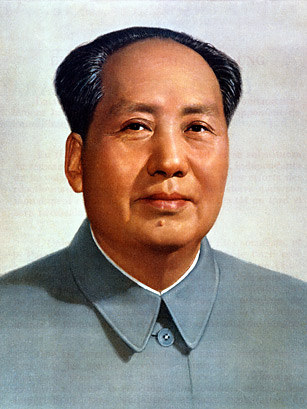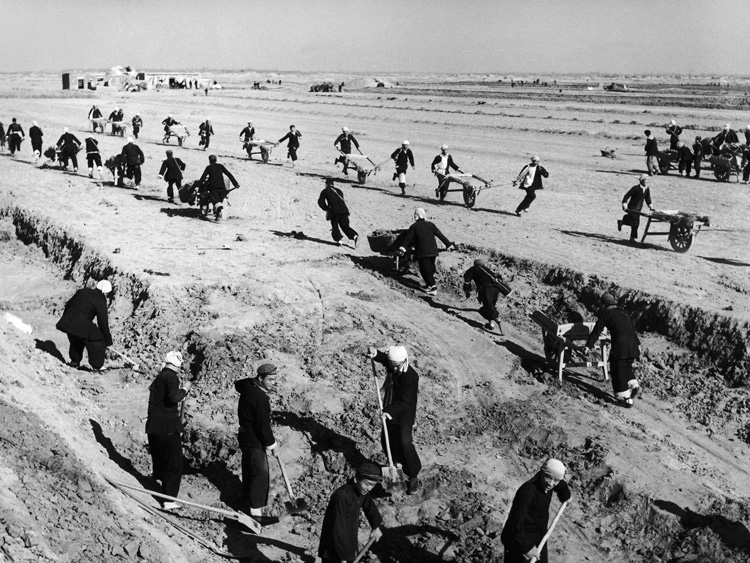Written By: Zach Champ
Connect with me on LinkedIn & Instagram!
![]()
THE GREAT GOBI DESERT
The great Gobi Desert, one of the largest deserts in Asia, stretches almost 1000 miles across Northern China and Mongolia. It is a historically significant area deeply tied to the region’s past.
However, due to increasing desertification, the Gobi Desert now finds itself threatening the future prosperity of China’s northern regions as it slowly grows each year.

Intense sandstorms, fueled by the shedding of topsoil in these once fertile lands, are assaulting cities as far south as Beijing. The expanding desert is quickly creating a zone of uninhabitable life.
This natural disaster is becoming a priority for the ruling Communist Party; the costs of desertification in China amount to billions in lost revenue each year.
To understand why this is happening we must examine the political past of China under communism, as well as, other relevant factors to the culture and practices of peoples within the area.
![]()
COMMUNIST CONTROL
In the 1950s and 1960s, Mao ZeDong, the premiere of China’s Communist Party, had gained control of the country.

During Mao’s reign, China struggled to rebuild itself after a series of civil wars and Japanese occupation throughout World War Two.
One of Mao’s ideas to achieve fast modernization in China was implementing a five-year plan, much like the Soviets did under Stalin.

Under the five-year plan, Mao would mobilize most of the country’s labor to harvest the natural resources needed to build the country’s infrastructure, cities, and utilities that would bring modern technology and higher standards of living into the country.

When this five-year plan was underway, large swaths of forest were cleared out in China’s northern regions — the same regions which border the Gobi Desert today.
The large forest had naturally served as a buffer between the desert and the fertile agricultural lands south of the Gobi.
/GettyImages-134511623-95e31920828248f286e86ed510fd119a.jpg)
When these forests were clear-cut, the trees, whose roots helped hold and maintain the fertile soil, were gone.
With no trees and plants to anchor the topsoil to the ground, it was quickly blown away by the forces of erosion.
![]()
OTHER ISSUES
Deforestation is only one part of the problem. Another significant factor is overgrazing.
Grasses and shrubs work much the same as trees do with retaining the top layer of nutrient-rich soil.
In Mongolia and Northern China, many people rely on grazing animals such as goats, cows, and sheep to sustain themselves and earn a living.

The steady increase in the human population in these areas also means a steady increase in the number of grazing animals. These grazing animals quickly consumed more grassland then what was available to sustain.
The result has led to changing the once rolling grasslands into an extension of the desert.
Sandy dunes now reside in places where grass once reigned due to this combination of deforestation and overgrazing.
![]()
PLANTING THE SEEDS OF A SOLUTION…
This brings us back to the present day, where, in response to this issue, the Chinese government has authorized the construction of a large, almost 3,000-mile-long, man-made forest to serve as a buffer between the Gobi Desert and Northern China’s agricultural lands — much as the original forests did.
This project, titled the ‘Three-North Shelter Forest Program’, is quickly becoming the new “Green Wall of China”.

Hundreds of thousands of acres of trees have been planted as part of the project.
This massive mobilization of labor and resources rivals the United States of America’s Civilian Conservation Corps from the Great Depression era.

The project is not only restoring balance to the damaged environments but is providing jobs for locals who usually rely on traditional economic activities like cattle grazing.
The end goal is to provide close to 88 million acres of reforested land by the year 2050. They are earnestly working towards that goal and making a lot of progress.
Portions of the expanded desert are already returning to their original forested conditions, and grass and other plants are repopulating the land.
Life is returning to the desert as it reverts to forest and grassland.
/img/iea/ypwqWo7RGN/china-desert-to-forest.jpg)
This Chinese land-management project is not unique. Similar developments are occurring in other parts of the world facing similar issues of deforestation. North African communities are undergoing the same process of desertification with the Saharan desert.
Likewise, they are experimenting with the creation of an artificially planted forest and buffer zones to hold it back.

These projects are exciting because they demonstrate that just as much as we have the potential to destroy nature, we humans also have the potential to fix and heal it!
![]()







